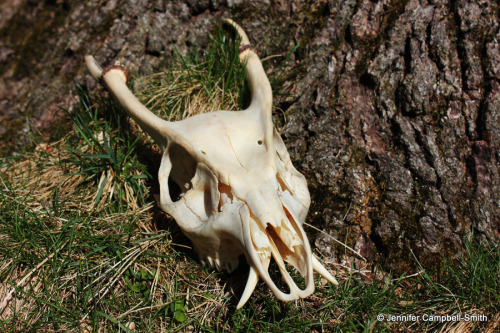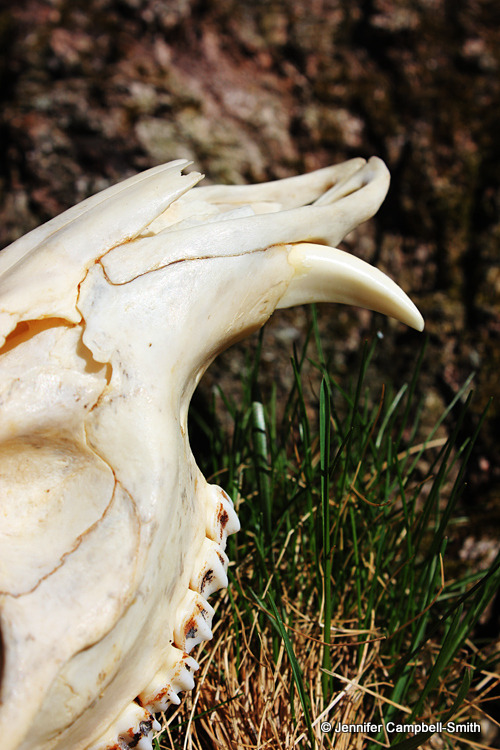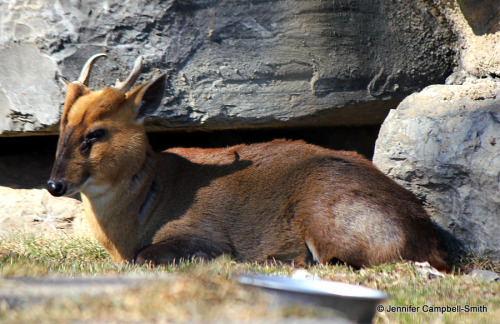#reeves muntjac
One of my favorite skulls in my collection, this is a Reeves’ muntjac (Muntiacus reevesi). I purchased this skull as is, I did not clean it myself. The final photo is of a live, captive Reeves’ muntjac at a zoo.
Muntjacs are relatively small, primitive deer that have fang-like “tusks” (downward pointing canines), and trust me, they are sharp, sharper than the canines on all the carnivore skulls I have. They also have small antlers that sit on characteristically long pedicles (the permanent outgrowths of the skull’s frontal bone from which antlers grow). Males typically fight with their tusks, rather than their antlers.
There are 12 recognized species of muntjac deer, and one of the fascinating things about them as a group is their chromosome count. Not only does the Indian muntjac (M. muntjak) have the smallest chromosome count of any mammal (males have a diploid number of 7 and females of 6 chromosomes), but the diploid number of chromosomes varies largely within the same genus; Reeves’ muntjacs have a diploid number of 46 chromosomes! Because of this variation within the genus, muntjac genetics are widely studied.
I adore these deer!!
Post link








